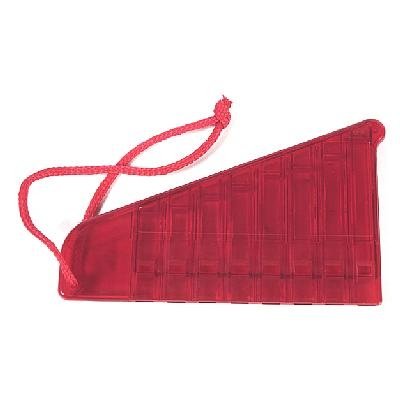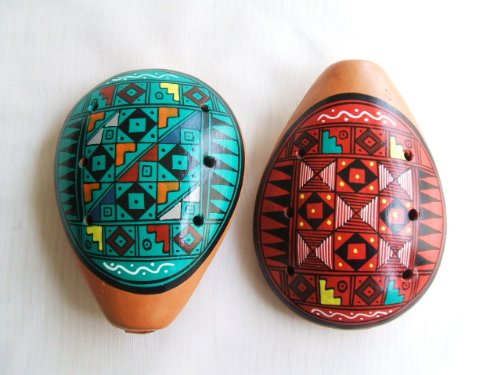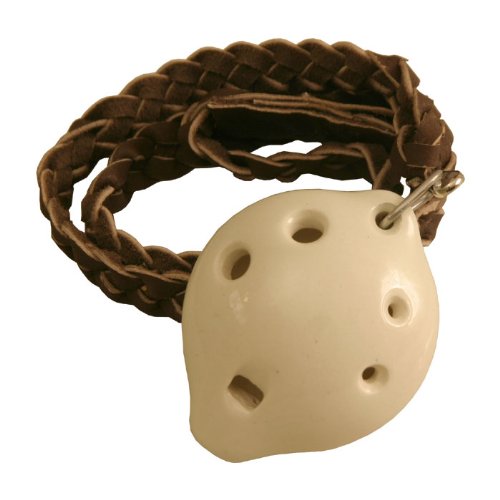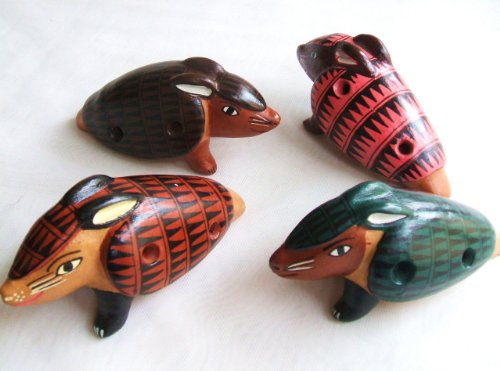Bamboo Pan Flute Review

Materials: Bamboo
Dimensions: Approx: 11"H x 8.5"W
Please allow variations in design and color due to its handmade nature Handmade - Please allow for minor variations
Bamboo Pan Flute Review

Materials: Bamboo
Dimensions: Approx: 11"H x 8.5"W
Please allow variations in design and color due to its handmade nature Handmade - Please allow for minor variations
Woodstock Kid's Pan Flute Review

Pan Elaborated Version 1988 for Flute & Piano Review

Two Large Peruvian Ocarinas. Musical Instrument. Review

Ocarina, Necklace, Tenor D 3x1.5", White Review

Ocarina, Necklace, Tenor D 3x1.5", White (Item Code: ONSD-W) Ocarina, Necklace, Tenor D. White Glazed clay, six finger holes, over an octave of tones, leather necklace included. 3 Lx 1.5 W x 1.25 inches Deep. Clay molded, variations in the final product should be expected.
Although the term Ocarina, is less than 200 years old, the first known ocarina-like instrument appeared in South and Central America about 12000 years ago. Ocarinas shaped like birds and animals could also be found in India as early as 5000 BC. China had its own rounded and egg-like forms called a Xun. In 1527, Cortes sent a group of Aztec performers to Spain, where they introduced the Ocarina to Europe. They remained a popular toy for more than 340 years until 17 year old musician-baker Guiseppe Donati originated the first pitched diatonic scale ocarinas.
To play the ocarina, hold it at a 45-degree downward slope from your lips. The thumbs cover the bottom holes and the Index and Middle fingers of each hand cover the top holes. Angling the ocarina up so that your upper lip impinges on the labium window will create sharps, or flatten the tones.
Four Peruvian Armadillo Ocarinas, Musical Instrument. Review

Pour Invoquer Pan... Flute and Piano Review

Double Mijwiz Review

13 Pipe Zampona Double Pan Flute Fair Trade Review
